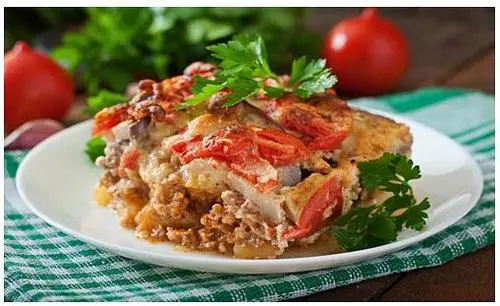
A traditional Greek meal typically consists of a variety of dishes that showcase the flavors and ingredients common in Greek cuisine. The main components of a traditional Greek meal often include:
- Mezedes (appetizers): These small plates are designed for sharing and can include a variety of items such as olives, cheese (like feta or kasseri), tzatziki (yogurt-cucumber dip), taramasalata (fish roe dip), dolmades (stuffed grape leaves), and grilled octopus.
- Salads: Greek salads, also known as horiatiki, typically consist of tomatoes, cucumbers, red onions, olives, feta cheese, and a dressing made from olive oil, red wine vinegar, and dried oregano.
- Breads: Pita bread or other types of crusty bread are often served alongside other dishes.
- Main dishes: Traditional Greek meals often include grilled or roasted meats like souvlaki (skewered meat), gyros (meat cooked on a vertical rotisserie), or moussaka (a layered dish with eggplant, ground meat, and béchamel sauce). Seafood, such as grilled fish, is also common in coastal areas.
- Vegetarian dishes: Many Greek dishes are vegetarian or can be easily adapted for vegetarian diets. Examples include spanakopita (spinach and feta pie), gemista (stuffed tomatoes and peppers), and gigantes plaki (baked giant beans).
- Side dishes: Sides like lemon-roasted potatoes, rice pilaf, or horta (boiled greens with olive oil and lemon) often accompany the main dishes.
- Desserts: Traditional Greek desserts include baklava (a sweet pastry made with layers of phyllo dough, nuts, and honey), loukoumades (fried dough balls soaked in honey), and galaktoboureko (custard-filled phyllo pastry).
- Beverages: Meals are often accompanied by local wines, ouzo (an anise-flavored liqueur), or other alcoholic or non-alcoholic beverages.
These components may vary depending on the region, season, and personal preferences, but they generally reflect the diverse and flavorful nature of Greek cuisine.
In addition to the components already mentioned, Greek cuisine also emphasizes the use of fresh, local, and seasonal ingredients. Olive oil, a staple in Mediterranean diets, is used extensively for cooking, dressings, and dipping. Herbs like oregano, mint, dill, parsley, and thyme are commonly used to add flavor to dishes, while spices like cinnamon, nutmeg, and allspice are used in both sweet and savory recipes.
Yogurt is another important component in Greek cuisine, often used as a base for dips, sauces, and desserts. For example, Greek yogurt can be found in tzatziki sauce, which is often served with grilled meats, pita bread, or as a dip for vegetables.
Many Greek dishes also feature legumes, such as lentils, chickpeas, and various types of beans. These ingredients are often used in soups, stews, or salads, providing a healthy and filling option for vegetarians and meat-eaters alike.
Fruits and nuts are commonly incorporated into Greek meals, either as part of a dish or as a light dessert or snack. Fresh fruit is often served at the end of a meal, while nuts like almonds, walnuts, and pistachios are used in many dessert recipes.
Overall, traditional Greek meals highlight the diverse and flavorful nature of Greek cuisine, which is characterized by its emphasis on fresh, local, and seasonal ingredients. These meals often encourage communal eating and sharing, fostering a warm and welcoming atmosphere that is an integral part of Greek culture.